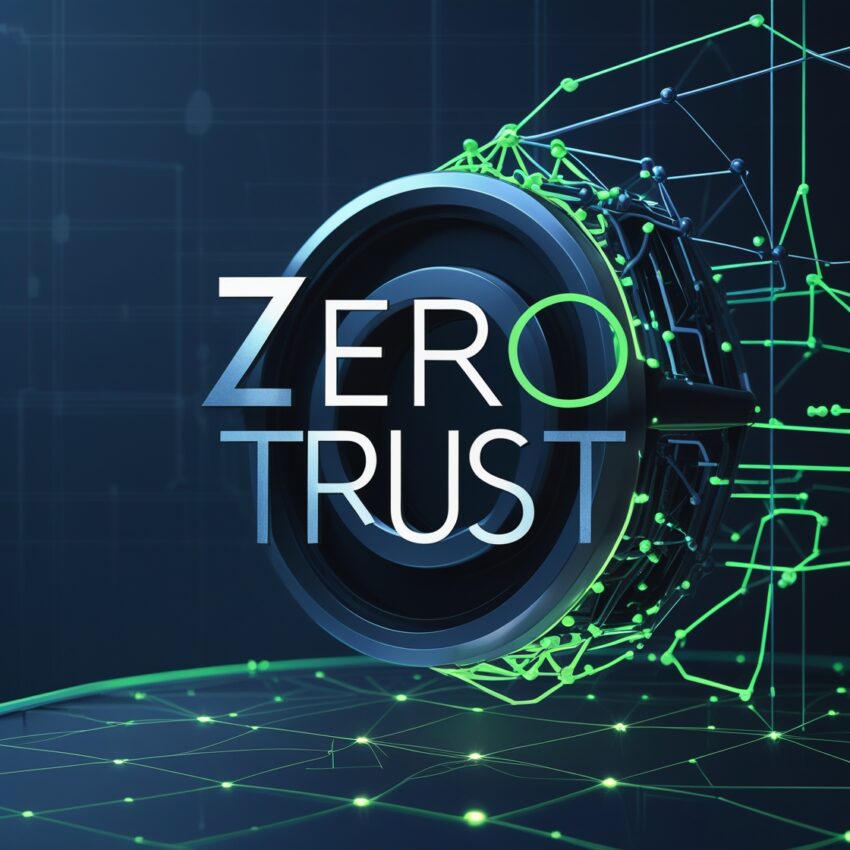Zero Trust Security Architecture in 2025 :
In 2025, the cybersecurity landscape continues to evolve rapidly. With remote work, cloud computing, and mobile access becoming the norm, traditional network security models are no longer sufficient to protect critical data and systems. As a result, businesses are increasingly adopting Zero Trust Security Architecture (ZTSA)—a modern framework designed to address today’s complex threat environment.
Zero Trust is not a single product or tool but a comprehensive security approach built on the principle of “never trust, always verify.” Whether a user is inside or outside the corporate network, access is never granted without strict authentication, authorization, and continuous validation.
This article explores what Zero Trust Security Architecture is, why it matters in 2025, and how organizations can successfully implement it.
What Is Zero Trust Security Architecture?
Zero Trust Security Architecture is a cybersecurity model that assumes no user or system—whether internal or external—should be trusted by default. Instead of relying on network location as a basis for trust, ZTSA requires verification of every access request based on multiple factors such as identity, device health, location, and behavior.
The core components of Zero Trust include:
- Identity and access management (IAM)
- Multi-factor authentication (MFA)
- Least privilege access controls
- Microsegmentation of networks
- Continuous monitoring and real-time analytics
By minimizing the attack surface and eliminating implicit trust, Zero Trust helps prevent unauthorized access and lateral movement by threat actors.
Why Zero Trust Is Essential in 2025
Cyber threats are growing more sophisticated, and traditional perimeter-based security models are no longer effective. The rise of remote work, cloud adoption, IoT devices, and hybrid infrastructures has expanded the attack surface beyond the data center.
Here’s why Zero Trust is critical for modern security:
- Remote and Hybrid Workforces
Employees are working from home, cafes, and anywhere in between. Zero Trust ensures secure access regardless of location or device. - Cloud-Based Infrastructure
Applications and data are stored across multiple cloud platforms. Zero Trust provides consistent security policies and visibility across environments. - Increased Insider Threats
Whether intentional or accidental, internal users can pose serious risks. Zero Trust enforces role-based access and monitors behavior to detect anomalies. - Advanced Persistent Threats (APTs)
Hackers use stealthy, long-term strategies to infiltrate systems. ZTSA limits their ability to move laterally and access sensitive data.
Key Principles of Zero Trust Security
Implementing Zero Trust means following a set of foundational principles:
- Verify explicitly: Always authenticate and authorize based on all available data points, including user identity, location, device, and behavior.
- Use least privilege access: Limit access to only what users need to perform their tasks. Reduce the risk if credentials are compromised.
- Assume breach: Build systems with the expectation that breaches will happen. Segment systems and monitor everything to contain damage quickly.
- Continuous monitoring: Employ real-time analytics and threat detection tools to evaluate activity and respond immediately to potential threats.
- Device and network microsegmentation: Break the network into smaller zones to prevent widespread compromise if one segment is breached.
Steps to Implement Zero Trust in Your Organization
- Assess Your Current Environment
Identify where sensitive data lives, who accesses it, and what systems are at risk. - Establish Identity-Centric Security
Deploy strong identity verification tools such as SSO (single sign-on) and MFA. - Enforce Least Privilege Access
Use role-based access controls and remove unnecessary permissions. - Segment Your Network
Divide your network into logical segments and apply controls between them. - Adopt Endpoint Detection and Response (EDR)
Monitor endpoints for suspicious activity and respond to threats in real time. - Leverage Automation and AI
Automate security policies, threat detection, and incident response where possible. - Educate and Train Staff
Human error remains a key threat. Regularly train employees on phishing, password hygiene, and security best practices.
Top Technologies That Enable Zero Trust
Many cybersecurity vendors are offering tools that support Zero Trust principles, including:
- Microsoft Azure Active Directory – For identity-based access control
- Okta – For cloud identity and SSO
- Zscaler – For secure access to applications without VPNs
- Palo Alto Networks – For advanced network segmentation and threat detection
- CrowdStrike – For endpoint monitoring and response
Conclusion
Zero Trust Security Architecture is no longer optional—it is a strategic imperative for businesses navigating the digital landscape of 2025. With cyberattacks growing more frequent and damaging, relying on traditional perimeter-based defenses leaves organizations vulnerable.
By adopting Zero Trust, businesses can reduce risk, enhance visibility, and secure their operations from the inside out. Whether you’re a startup or a large enterprise, now is the time to reimagine your security model with Zero Trust at its core.
